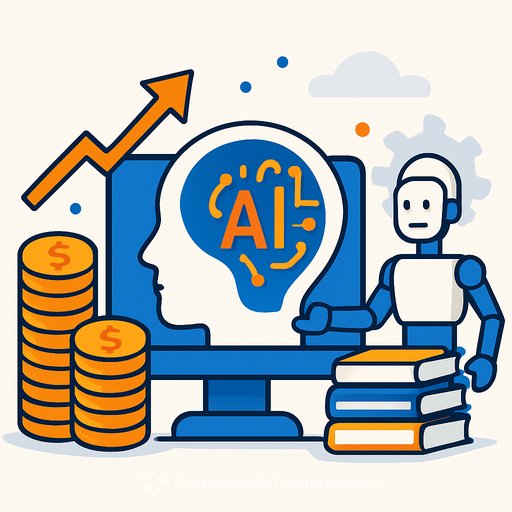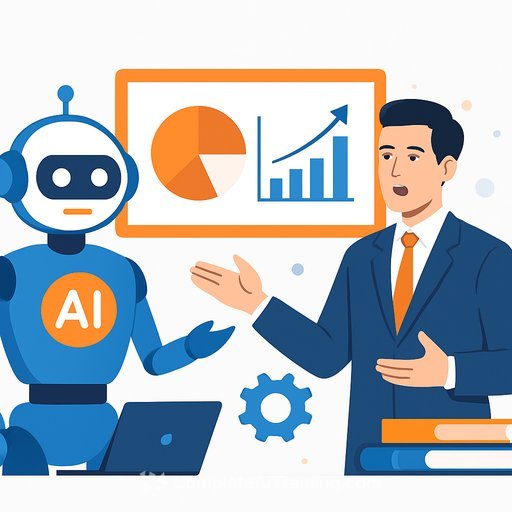AI Money Flood: What Finance and HR Need to Do Before 2026
The money pouring into artificial intelligence is hard to wrap your head around. Investors have pushed hundreds of billions into Big Tech and startups, and some estimates claim AI now accounts for 92% of US GDP growth. If current trends hold, the "largest technology firms" alone could spend $550 billion on AI in 2026. With that kind of capital, people expect an era-defining outcome - not incremental progress.
Two Futures, Neither Comfortable
Economists, journalists, and VCs keep returning to the same fork in the road: full job automation or a stall-out that tanks growth. Publishing CEO Keith Riegert put it bluntly, saying there are only two AI futures - mass unemployment, or a "scaling plateau triggering economic collapse." He even said the collapse scenario is the one he'd prefer.
At a major industry conference in the UAE, he told the room: "It's time to use it or get left behind." He called AI both "transformative" and "unsettling," admitted he's "not very happy that AI is here," and then explained why he partnered with OpenAI anyway - mandating employees use ChatGPT for at least one hour daily.
On stage, he created a book in five minutes and listed it on Amazon before deleting it. He noted that when Kara Swisher's biography was announced, AI-generated clones hit the market before release. Amazon is now flooded with low-quality AI books, a warning sign for anyone tying their brand to automated content. If you publish or sell digital products, read Amazon's content rules closely: KDP Content Guidelines.
What Finance Should Do Now
- Budget with hard gates: Tie AI spend to unit metrics (cost per ticket resolved, hours saved per workflow, error rate). Set kill criteria for pilots that don't move the numbers.
- Track true cost of ownership: Model usage fees, GPU/compute, required data cleaning, human review time, and legal review. Hidden costs ruin rosy ROI.
- Run scenario tests: Plan for both extremes - aggressive automation and a growth plateau. Lock in flexible contracts, and avoid fixed long-term commitments that assume constant gains.
- Guard against content risk: Budget for brand protection: plagiarism checks, source verification, and compliance tooling. AI-driven content errors are financial risks, not just PR risks.
What HR Should Do Now
- Skills audit and role design: Map jobs to tasks. Flag what can be augmented versus automated. Set expectations for human review in any workflow involving AI outputs.
- Policy, then tooling: Define what data can be used, how outputs are checked, and how AI use is disclosed. Quality control beats forcing "one hour a day" of tool usage.
- Measure outputs, not tool time: Reward teams for better results, fewer errors, faster cycle time - not for how long they click around inside a chatbot.
- Upskill with purpose: Train people on prompts, review skills, and process design. For structured paths by role, see AI courses by job.
Operating Rules for AI Programs
- Governance: Name owners in Finance, HR, Legal, and IT. Decisions need a traffic cop.
- Data guardrails: No sensitive data in public models. Use approved systems only.
- Human-in-the-loop: Mandatory review for external-facing content, financial outputs, and policy-related communications.
- Brand and compliance checks: Plagiarism detection, source logging, and audit trails.
- Model evaluation: Test for bias, hallucinations, and drift. Document known failure modes.
- Cost dashboards: Track spend by team, use case, and model. Kill vanity projects.
- Vendor diligence: Clarify data retention, IP indemnity, and uptime SLAs.
- Incident response: Log errors, fix root causes, and share learnings.
30/60/90-Day Plan
- Days 0-30: Inventory use cases, pick three with clear metrics (support tickets, invoice processing, policy drafts). Draft a simple AI use policy. Stand up review checkpoints.
- Days 31-60: Pilot with real data. Compare against control groups. Start role-based training for managers and ICs.
- Days 61-90: Scale winners, sunset losers. Lock budgets for Q2-Q3. Publish internal case studies and refresh policy based on what broke.
The Takeaway
The money is here, and expectations are sky high. Whether AI clears the bar or stalls, your risk is the same: ungoverned spend, fragile processes, and a workforce stuck between fear and blind adoption. Build guardrails, measure real outcomes, and train people to use these tools with judgment.
If you're putting a plan in place now, this curated list can save weeks of research: AI tools for Finance.
Your membership also unlocks:










